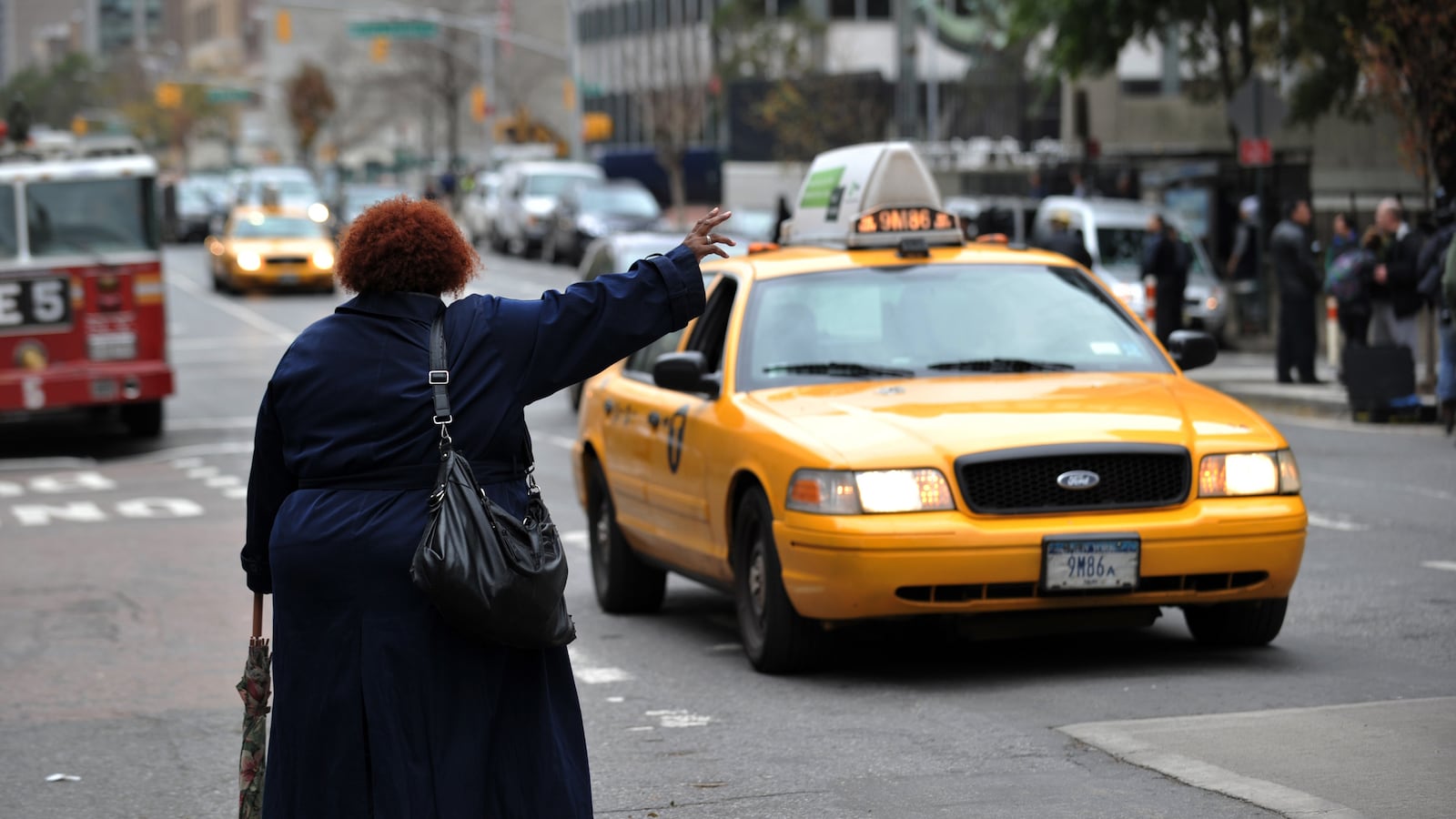The idea was simple: how can the taxi system be made more efficient? After all, at any given moment there are hundreds of taxis driving around New York looking for fares and hundreds of people seeking to hail cabs. And in the 21st century the industry relies on a rather ancient way of matching supply and demand: drivers cruise busy areas, and potential passengers stick out their hands and yell.

Hailo, a London-based startup with two main hubs in London and N.Y.C., was designed with the help of taxi drivers and is looking to make this complicated system run better. Launched in November 2011, Hailo is a mobile app that connects people needing a ride with available taxi drivers. It is live in cities such as London, Toronto, Chicago, Barcelona, and, as of this year, New York.
Riders have long been frustrated at their inability to find a taxi where and when they need it. But the inspiration for Hailo didn’t come from a tech-savvy city dweller. It came from three taxi drivers in London who had a public, as well as personal, interest in improving the taxi experience.
In 2010 a series of less reliable taxi-oriented apps had launched. But none had managed to host and integrate a large network of users, as Hailo set out to do. Unlike other taxi-hailing apps, Hailo was meant to satisfy the drivers first, with the notion that “the best experience for the guy in the back seat would come from taking care of the guy in the front seat,” as founder Jay Bregman likes to put it.
Bregman, who had previously founded eCourier.co.uk, teamed up with the taxi drivers to help make their idea a reality. Bregman picked up his fixation with fixing faulty, complex systems from his father, the well-known heart surgeon David Bregman, who invented the intra-aortic balloon pump. The convoluted and often chaotic tangle of the taxi system was an attractive project to tackle. Bregman saw an opportunity to “use technology to make the transportation industry more sexy and innovative.”
The idea caught on quickly. Millions of people have downloaded the app, and Hailo is now present in 11 cities around the world, including New York. The New York City Taxi and Limousine Commission has not exactly been at the forefront of social media and technological innovation. But Bregman said Hailo’s relationship with the TLC was “fantastic,” and that it was responsive toward the idea. What harm could the TLC find in a product that was both free to the city and improved the lives of the people it was created to serve?
Hailo works by using the GPS on your phone to pinpoint your location. Say you have just come out of a Broadway show, the streets are packed with people, and there’s not a free taxi in sight. When you launch Hailo on your phone, you will automatically see on the map where Hailo-connected taxis are. The “hailing” takes place when you click “Pick Me Up Here,” at which point drivers are offered the opportunity to “Accept Hail,” get your location information, and pick you up. The mechanics of Hailo’s operation run on a complex algorithm that takes into account the taxi’s location in relation to the would-be passenger, how long (including traffic) it would take to get there, and, most important, whether the driver has the app. Hailo is optional for taxi drivers. They can sign up through the website for free, at which point their phones become embedded in the network of Hailo users.
So how does Hailo make money? In most cities (not yet in New York), Hailo provides passengers with the option to pay through the app. When that happens, Hailo takes a percentage as a commission. The company, which has about 200 employees and notched revenue of $100 million last year, has raised about $50 million in venture-capital funding.
Hailo is not the first company to realize that our phones may work as a second pair of car keys. Uber, founded in 2009, offers a mobile service to reserve luxury cars. Although Uber is part of a transportation industry whose foundation is becoming increasingly virtualized, Bregman does not see it as a competitor, but rather as a company that provides a different service. “Hailo,” he says, “is for yellow cabs and uses the existing infrastructure to make it better and help more people.” Uber’s default application, on the other hand, is orientated toward private cars and people looking for a more upscale experience. Still, Uber has indicated that it wants to make its way into the taxi market.
Of course Hailo is a business seeking to solve a business problem. But it also has deeper implications for our lives. Without getting too Zen about it, Hailo’s goal is really to cut out the downtime between the moments in which we constitute, and eventually reaffirm, who we are. Use Hailo inside, perhaps when you are finishing up your drink, so that by the time you are outside, the cab is already there. Think what the typical New Yorker could do with the hours she will spend over her lifetime looking up and down the street for a yellow taxi. Moments of unproductivity, uncertainty, and—for a certain Chicagoan’s first stab at hailing a New York taxi—fear completely disappear.
“People want to live their lives in a straight line,” Bregman said. “Hailo tries to create that efficient world and make living easier.”






